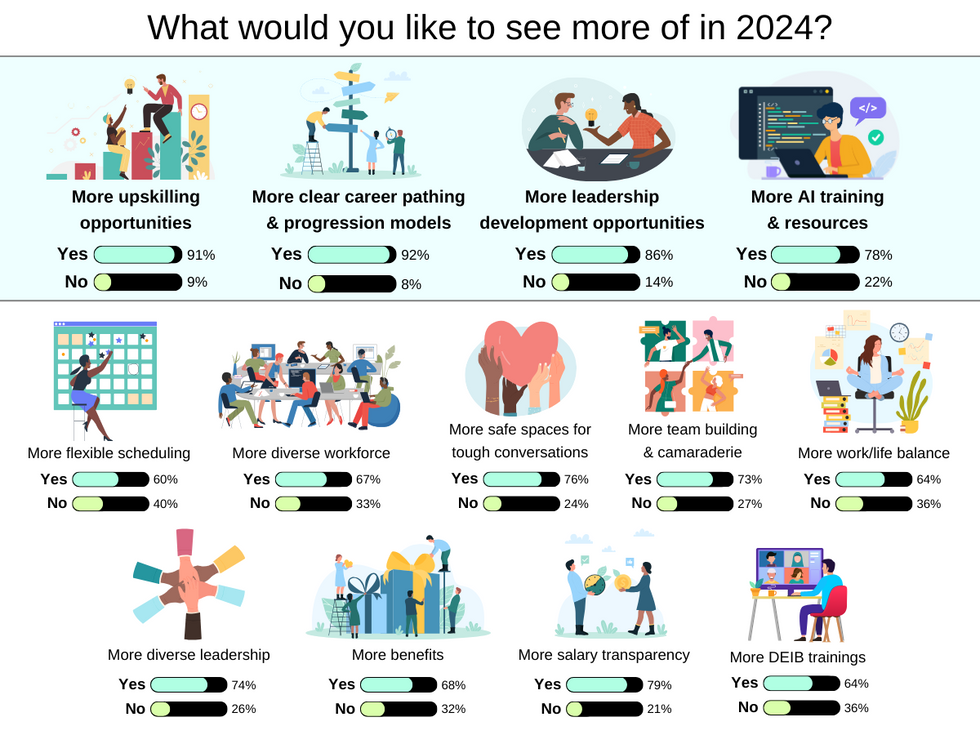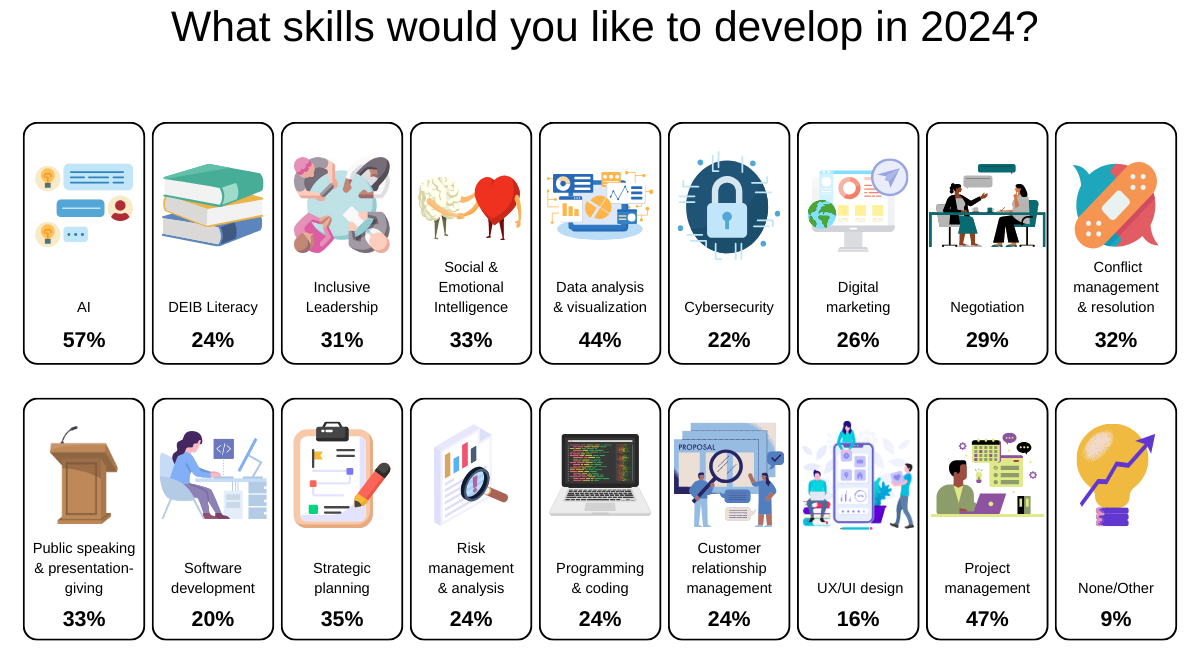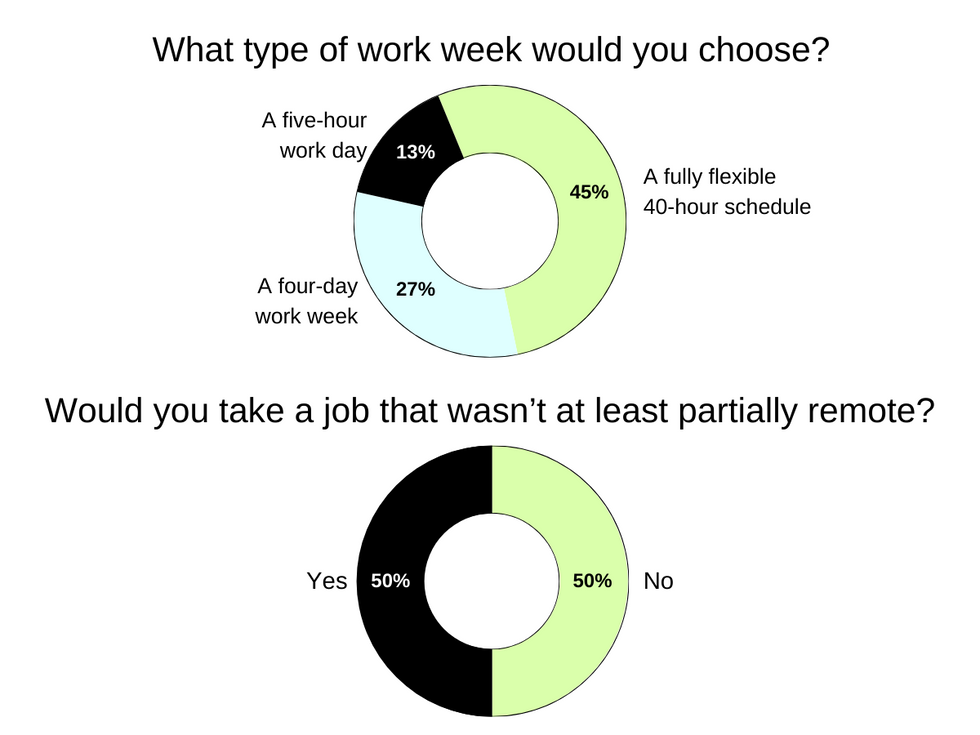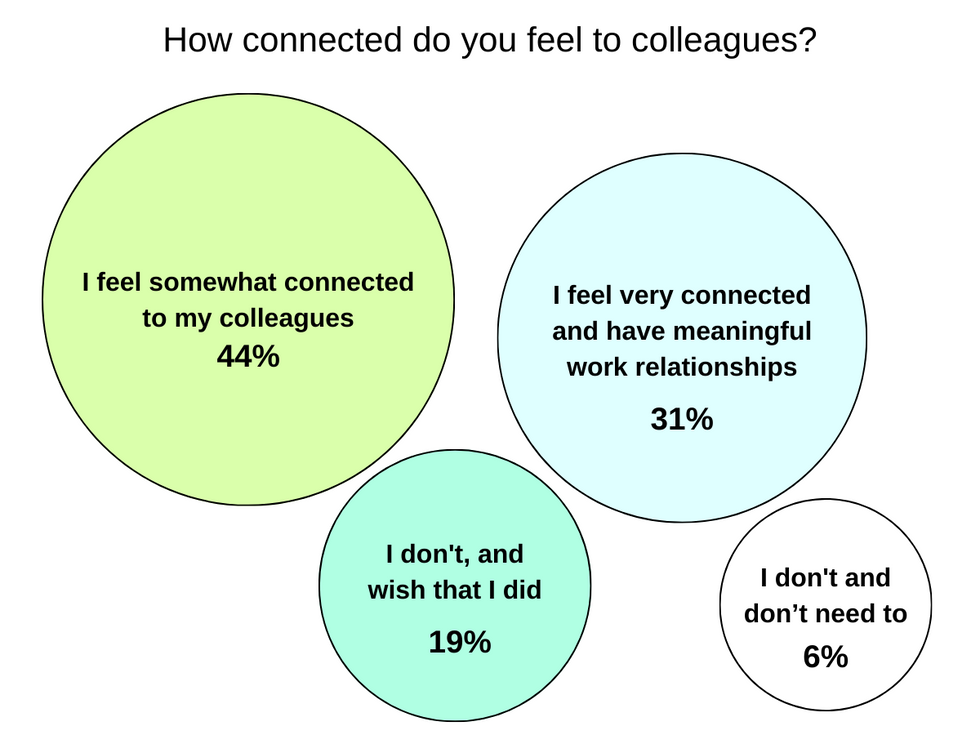What Diverse Talent Wants 2024 Report
Since 2014, PowerToFly has been elevating underrepresented talent and helping organizations build inclusive, representative workplaces where this talent can thrive. That’s a decade’s worth of workplace diversity, equity, inclusion, and belonging (DEIB) efforts, and a decade of witnessing both wins and losses in this space.
We’ve seen inequitable work cultures and policies held to account, major boons in salary transparency, “ban the box” laws, as well as the increased adoption of DEIB trainings and initiatives.
We’ve also seen the outright removal of rights for many identity groups, and stalled progress for others.
Against this backdrop, and following the 2023 reversal of affirmative action and subsequent ban of DEI programs at some public universities, the future of workplace DEIB has been called into question.
Among all of this, our mission remains the same — to create equitable opportunities for the workforce and our world.
If you want to understand how best to elevate underrepresented talent in the workplace, go to the source and ask them.
Before we figure out where we’re going, we need to know where we are. Diverse professionals are facing new challenges in 2024, and it’s more important than ever to listen to what they have to say.
For PowerToFly’s fourth annual What Diverse Talent Wants report, we surveyed 600+ professionals across backgrounds and identities about what they need to see from their existing and prospective employers — in terms of practices, benefits, professional development opportunities, work cultures, and more — in 2024. We then analyzed and distilled that data into strategic, actionable recommendations that organizations can implement today.
From our reporting and analysis, we learned that diverse professionals want employers to do the following in 2024:
- Invest more in learning and development.
- Pay what you preach.
- Don’t forsake flexibility.
- Rethink the candidate experience.
- Solve today’s employee connection crisis, for good.
- Double down on DEIB.
Download the full report for more insights
Here's a sneak peak of what you'll find



5. Solve for today’s employee connection crisis.

- PowerToFly’s Resources for Employers. An extensive library of articles, reports, and white papers with expert advice and thought leadership on a broad range of HR and DEIB topics.
- PowerUp, a holistic learning platform with self-paced courses, resources, crash-course videos, trending DEI conversations, and SHRM and HRCI credits to improve your employer brand.
- PowerPro, the first all-in-one diversity recruiting software with 17 million+ diverse candidate profiles and AI Talent Match, helping you to pull a list of diverse candidates whose resumes most closely match each role you have open in seconds.
- A list of free diversity & inclusion training materials for 2024.
- 50 diversity & inclusion survey questions, to help inform your own employee engagement and experience surveys this year. (Want strategic, tailored support to help you implement effective and DEIB-backed employee surveys at your organization? Learn about our DEIB consulting services.)
- A list of 11 diversity & inclusion courses to drive employee retention, learning, and growth in 2024.
- Our 2023 and 2022 What Diverse Talent Want reports, for previous years’ insights, data, and recommendations.
